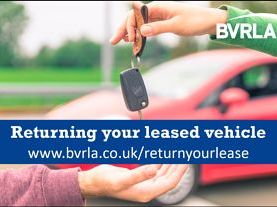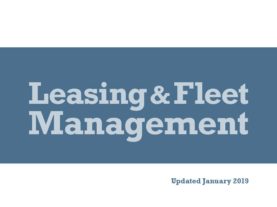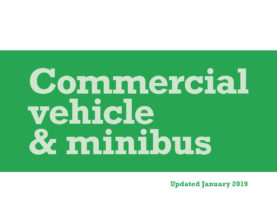City car, executive saloon, 4x4, MPV or van – whatever your transport needs, a BVRLA member can supply the right vehicle for the job. Whether it is for a quick trip to the furniture store, a weekend break to the country or transport for your new sales rep, the vehicle rental and leasing industry can provide you with safe, cost-effective and hassle-free motoring by the hour, day, week, month or year.
- Use a BVRLA member. Seeing the BVRLA logo when you’re booking is a sign that you are dealing with a quality assured company that operates to a mandatory professional code of conduct. It also allows you to use the BVRLA's Conciliation Service in the unlikely event of a dispute.
- Do your homework. If you’re relying on a price comparison site when getting quotes, pay close attention to what isn’t included in the price. Some may not include VAT, because they are available for business customers only. All personal contract hire payments include VAT, and all will include the cost of the road tax for the period of the contract.
- Understand what the different contract lengths are. When looking for a deal, you’ll see figures such as 3+35 or 6+23. This relates to the payment plan – the latter figure is how many months the agreement is for, while the smaller number is the multiples of the monthly cost you’ll need to put down upfront. So a 3+35 is a contract that requires you to put down 3x the monthly cost as a deposit and 35 monthly payments.
- Decide if you want to take out a maintained contract. On top of your monthly fee, you can also pay a fixed amount to cover your lease car’s maintenance. This will not only include the cost of all routine services, but tyres, batteries, exhausts - so you’ll be able to get a tyre replaced when it wears low.
- Be honest about how far you drive each year… In order to fix your monthly payments, a contract hire arrangement is an agreement to drive the vehicle for a specific period of time and for a specific distance. Therefore it’s vital to correctly estimate your annual mileage. The most common contracts are for 8,000, 10,000, 12,000 and 15,000 miles per year. Spend time working out how far you drive each year, then pick a lease deal that suits you.
- … and know about your excess mileage charge. If you exceed the agreed mileage, you may have to pay a penalty for this extra mileage at the end of the agreement. This will be clearly set out in your contract, so if you’re mid-way through your time with the car and think you’re going to go over your limit, you can start putting aside a small amount each month to cover this cost at the end of the contract.
- Read the rest of the paperwork. Make sure you read and understand the terms and conditions of your contract with the leasing company. If you’re booking with a leasing broker, make sure you understand their role and who you need to contact.
- Remember that you don’t actually own the vehicle… Personal contract hire is effectively a long-term rental, and the vehicle belongs to the finance company. That means you can’t modify the car without their permission – so you’ll need to speak to them before you fit a tow bar. Furthermore, if you wish to take the vehicle abroad, you’ll need a VE103 certificate to prove you’re entitled to drive the car in Europe.
- … So hand it back in good condition at the end of the contract. Leasing companies calculate your monthly cost on the proviso that the car will come back to them in a certain condition. The BVRLA produces a guide to help you understand the difference between fair wear and tear and unacceptable damage. You can request a copy of this from your leasing company before returning the vehicle.
- Know what to expect when the vehicle is collected. Some leasing companies may arrange a full vehicle inspection and condition report when the car is collected, while others will collect the vehicle and complete a full inspection later at their nominated site. Either way, you should be present when the vehicle is collected, as you and the representative from the leasing company must check and agree on the vehicle’s condition. All readily apparent damage will be noted on the vehicle collection form which you should both sign.




